Do you have a question about the Ruckus Wireless ZoneFlex 7055 and is the answer not in the manual?
Crucial safety warnings and precautions for installing and operating the Ruckus Wireless APs.
Lists other essential documents and resources for Ruckus Wireless APs, enhancing user understanding.
Provides instructions on how to submit feedback and suggestions for improving the user guide.
Explains text and notice conventions used throughout the guide for clarity and consistency.
Provides a general introduction to Ruckus Wireless APs, their features, and benefits for indoor deployments.
Details the process of safely unpacking the Ruckus Wireless AP and verifying package contents.
Lists all items included in a standard Ruckus Wireless AP package for user verification.
Identifies the physical features of various Ruckus Wireless AP models discussed in the guide.
Outlines essential pre-installation tasks, including site surveys and hardware preparation for AP installation.
Guides users through the initial configuration steps of the Ruckus Wireless AP before deployment.
Explains how to verify the correct operation of the AP after installation and before final deployment.
Details the process of placing the AP in its final location and connecting it to the network and power.
Provides steps to resolve common issues encountered during the installation process of Ruckus Wireless APs.
Provides specific physical installation instructions for the ZoneFlex 7055 AP to an electrical outlet box.
Details the physical installation procedures for the ZoneFlex 7441 DAS AP in distributed antenna systems.
Refers to the Quick Setup Guide for physical installation instructions for the ZoneFlex H500 AP.
Covers prerequisites and initial steps for configuring APs, especially before network integration.
Explains the layout and key elements of the Ruckus Wireless AP's web-based management interface.
Highlights differences in the web interface menu for dual-band APs compared to single-band models.
Guides on setting device name, location, login credentials, and other AP-specific properties.
Details how to configure AP internet connectivity, including VLANs, NTP, and IP addressing.
Explains how to set up local subnets, enabling routing and DHCP functions on the AP.
Covers configuration of common and specific wireless settings, including SSIDs, security, and radio parameters.
Describes how to configure AP Ethernet ports, including port types, VLANs, and 802.1X settings.
Details the setup of Hotspot services, including redirect URLs and RADIUS server configurations.
Displays a summary of the AP's current status, including name, serial number, software version, and MAC address.
Shows AP network settings, including IP address, gateway, DNS, NTP, and connection type.
Allows viewing of router (local subnet) configurations and connected clients.
Displays the current common wireless settings applied to all WLANs on the AP.
Guides users on changing the default administrative username and password for enhanced security.
Covers enabling and configuring management access via HTTP, Telnet, SSH, and FlexMaster.
Explains how to view event logs, send them to a syslog server, or save them for support.
Details methods for checking, applying, and scheduling firmware updates for Ruckus Wireless APs.
Provides instructions on how to restart the AP using the web interface without altering current settings.
Guides on resetting the AP to its original factory default configuration, erasing all custom settings.
Explains how to use built-in ping and traceroute tools to check network connectivity from the AP.
Directs users to the Ruckus Wireless Support Portal for additional documentation and resources.
Crucial safety warnings and precautions for installing and operating the Ruckus Wireless APs.
Lists other essential documents and resources for Ruckus Wireless APs, enhancing user understanding.
Provides instructions on how to submit feedback and suggestions for improving the user guide.
Explains text and notice conventions used throughout the guide for clarity and consistency.
Provides a general introduction to Ruckus Wireless APs, their features, and benefits for indoor deployments.
Details the process of safely unpacking the Ruckus Wireless AP and verifying package contents.
Lists all items included in a standard Ruckus Wireless AP package for user verification.
Identifies the physical features of various Ruckus Wireless AP models discussed in the guide.
Outlines essential pre-installation tasks, including site surveys and hardware preparation for AP installation.
Guides users through the initial configuration steps of the Ruckus Wireless AP before deployment.
Explains how to verify the correct operation of the AP after installation and before final deployment.
Details the process of placing the AP in its final location and connecting it to the network and power.
Provides steps to resolve common issues encountered during the installation process of Ruckus Wireless APs.
Provides specific physical installation instructions for the ZoneFlex 7055 AP to an electrical outlet box.
Details the physical installation procedures for the ZoneFlex 7441 DAS AP in distributed antenna systems.
Refers to the Quick Setup Guide for physical installation instructions for the ZoneFlex H500 AP.
Covers prerequisites and initial steps for configuring APs, especially before network integration.
Explains the layout and key elements of the Ruckus Wireless AP's web-based management interface.
Highlights differences in the web interface menu for dual-band APs compared to single-band models.
Guides on setting device name, location, login credentials, and other AP-specific properties.
Details how to configure AP internet connectivity, including VLANs, NTP, and IP addressing.
Explains how to set up local subnets, enabling routing and DHCP functions on the AP.
Covers configuration of common and specific wireless settings, including SSIDs, security, and radio parameters.
Describes how to configure AP Ethernet ports, including port types, VLANs, and 802.1X settings.
Details the setup of Hotspot services, including redirect URLs and RADIUS server configurations.
Displays a summary of the AP's current status, including name, serial number, software version, and MAC address.
Shows AP network settings, including IP address, gateway, DNS, NTP, and connection type.
Allows viewing of router (local subnet) configurations and connected clients.
Displays the current common wireless settings applied to all WLANs on the AP.
Guides users on changing the default administrative username and password for enhanced security.
Covers enabling and configuring management access via HTTP, Telnet, SSH, and FlexMaster.
Explains how to view event logs, send them to a syslog server, or save them for support.
Details methods for checking, applying, and scheduling firmware updates for Ruckus Wireless APs.
Provides instructions on how to restart the AP using the web interface without altering current settings.
Guides on resetting the AP to its original factory default configuration, erasing all custom settings.
Explains how to use built-in ping and traceroute tools to check network connectivity from the AP.
Directs users to the Ruckus Wireless Support Portal for additional documentation and resources.
| Storage Temperature | -40°C to 70°C (-40°F to 158°F) |
|---|---|
| Operating Temperature | 0°C to 40°C (32°F to 104°F) |
| Power over Ethernet | 802.3af/at |
| Management | Web UI, SNMP |
| Humidity | 5% to 95% non-condensing |
| Power Consumption | 15W (maximum) |
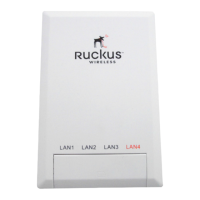
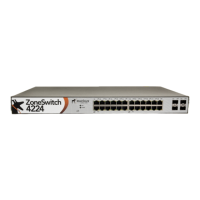

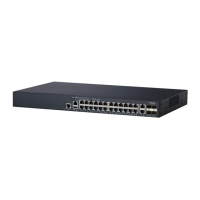
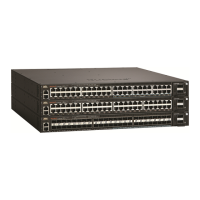
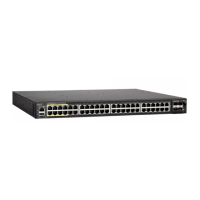


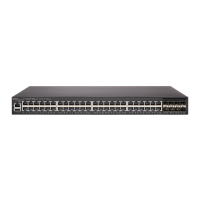
